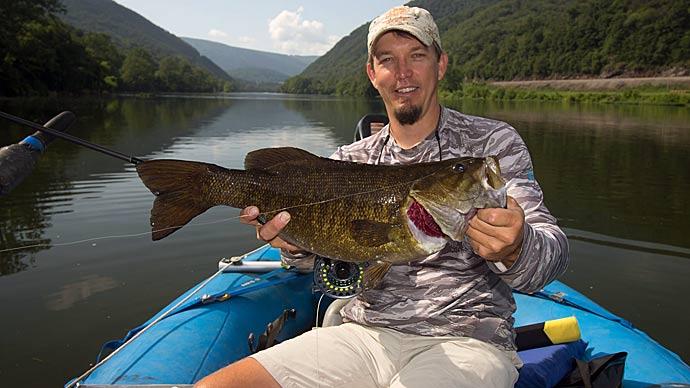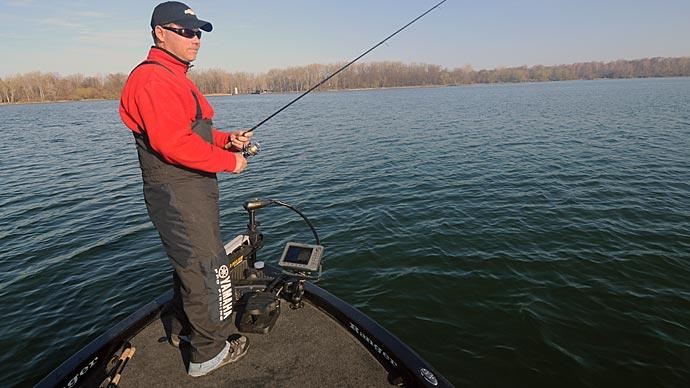
I believe the first week of October in 1990 if my "sometimes" brain remembers right that I was slapped in the face about whether scents used on plastic really worked. I had been fishing my local club events for two years. I was in the top five and knew I was ready to "get off the porch" and run with the big dogs. So I partnered up with a co-worker who had persuaded me to get back into bass fishing a few years prior, and we mailed off our money to enter a big tournament being head-on Sam Rayburn. We were on "go."
I booked a motel room for us and thought I needed some help. I hadn't been on Big Sam since you had to rent a Big O to fish with for the day. So I went to work finding a local guide on Sam Rayburn. I got hooked up with a fellow who was born and raised on a farm currently in about 12 feet of water and at least a quarter-mile off the bank. He convinced me that he knew where this tournament would be won. So we booked him the closest legal day away from tournament day. He fished out of a marina above the 147 bridge called Hanks Creek. This was a very popular marina during the first 15 to 20 years while Big Sam was young. We got there, and the boat slips were lined with new Rangers, Tritons, and Skeeters.
I mean to tell you, we couldn't wait to go out for a day in a "rocket ship" with this guide who knew where we could win. So we were walking the slips, and I noticed a middle-aged gentleman in a pair of bib overalls I knew he had worn the day before and probably two days before that. He walked up, stuck out his hand, and said, "You Fred?" And I say, "Yea." And he says, "I'm Ed."
He led us down the dock to this old long slender tri-hull that didn't even have carpet. The trolling motor and bracket looked like that day might be their last trip. It had an old outboard on the back that I'm sure was the one he bought the year they built Sam Rayburn. The boat was about 17 feet or so long. It wasn't stick steering, but that same style. At that point, I wasn't impressed, but little did I know.
We left the dock well before the sky even started to turn gray. He idled past the buoys, jammed on the gas, and the old outboard coughed, then took hold, and we were off. He quickly made a hard right turn and said, "You've got to watch that stump. It will surely get you.
I hadn't seen a thing except for a tiny reflector about the size of a beer bottle lid nailed to a tree. I later figured out we had turned into the boat lane that ran through a solid mass of standing timber they left above the bridge on Big Sam.
He suddenly took off, and we were curving and winding through the timber to get to the first topwater spot he wanted to fish. He had told us on the phone to tie on a topwater, and he would furnish everything else. He backed out off the "old girl," and we settled down in the water. He pointed down and said, "I plowed this peanut field every spring." He knew exactly where the old roadbed and fencerow were, and I was beginning to believe this might be okay.
We fished topwaters for about two hours and caught a few fish. Then he said, "Let's go! The big ones aren't here." It was now a bright sunny day, and I could tell why we were in the boat we were in. This style of boat was the only one that could get to the places he took us to fish. So we left the timber and headed for the grass beds on the west side of the 147 bridge.
He asked us if we could fish a Texas rig. Duh! I considered myself an expert with a Texas rig, and now I know this guy is alright. So while my partner and I are down at the bottom of the boat tying on a Texas rig, Ed pulls out two packages of 7-inch Ring Rascal worms from the pocket of his overalls, throws them down in the bottom of the boat, and says put one of these on.
He's caught two fish in two casts, and I haven't got my worm wet yet. I'm ready. I cast out, and nothing. I cast again and again, and still, nothing. We had fished about 50 yards, and the guide had caught about half that many fish while neither my partner nor I had caught a fish. I was paying close attention to how he was fishing the worm. He was using the same worms out of the same sack as us, the same weight, the same line, and the same hook. What the hell was wrong?
I had lost the flip that morning and was fishing from the middle in a 17-foot boat with three people trying to cast. You find yourself paying close attention to what's happening in a situation like this. I knew I was doing everything right. My pride, finally crushed, I asked Ed what I was doing wrong. He said I should wash my hands with a bar of ivory soap in the splash well and return to the boat's front.
I did as told, and he dripped about three or four drops of an oily liquid on my hands and told me to rub it in. Then, he handed me a little white bottle and said to put three or four drops on my worm and try again.
Keep in mind my partner, in the back of the boat, is turning his tackle box upside down trying to find something that will work and is not paying any attention to what Ed and I are doing.
The moral of this story is... IT WORKED! I start catching fish. After about another hour of the guide and I catching fish and dealing out a ration of you-know-what to my partner about his ability (or lack thereof) to catch fish, we show him, and he starts catching fish too.
This was my first lesson in the use of scents on plastics. That seven or eight hours on Sam Rayburn will forever be etched in my memory book as one of the best days I've ever had on the water. Later that afternoon, Ed told us how he discovered the scent he used in his formulation. Then, he made and sold the bottle of magic that we had been using that day.
It wasn't the first time I had been exposed to the use fish attracting scents, but his was the first that I had seen that didn't smell like licorice. Ed trapped muskrats for fur during the off-season. He had some of the scents he put on his traps in the boat and put some of it on a worm once in desperation - trying to find something that would help him catch more fish. It had worked. He later enhanced it by adding pure crawfish oil that he had discovered was available in Louisiana. He then diluted these in canola oil, bottled it, and sold it in all the marinas on the north end of the lake. I still have about a quart left of the gallon I bought from him before we returned home.
It's hard to say how much credit to give the "juice" and how much to give the hand washing with Ivory soap, but I still do both.
To a competitive bass angler, whether you are competing with other fishermen in another boat or just with your partner in the back of the boat, we all try to do everything possible to make the artificial lures we fish with as natural and lifelike as we can. You don't want to present something that looks good but the fish won't take it because it doesn't smell right.
It is said that a dog's sense of smell is 700 times more sensitive than a human's. And it is also believed that a bass' sense of smell is 700 times more sensitive than a dog's. Our local TP&W biologist says bass can detect toxins and food scents down to the parts per billion. That's some "smellin'."
Tackle manufacturers had added salt to plastic baits long before anyone added scents. Ed had us fishing with the worms with salt, but the fish would only pick them up once we added the scent. Berkley was the first to add salt and scent to their plastics in the early 90s. No offense intended, but the first worms Berkley brought out weren't pretty, and we all believed that they had to be pretty to catch fish. They were slightly off-colored and were not the most popular lures in production. Little did we know, huh? I won Angler of the Year in '92 at my club level using two primary colors of Berkley's 4-inch worms on every one of the five or six lakes we fished. I will always believe it was because of the scent.
However, anglers in the southern part of Texas weren't having the success we were with some scented baits because the natural forage in their lakes is different from where I live. Through personal experience, I have learned that it takes salt and scent in water with an abundance of grass or aquatic vegetation, and another scent in water with mainly rock and standing timber. A salt and garlic combination is one of the scents I've found that will crossover and work in both situations. This combination is added to a large percentage of the baits manufactured today. About as many people manufacture add-on scents as companies making plastic baits. Each has its own "claim to fame" and its following of anglers who wouldn't use anyone else's product.
No one has invented a scent that won't leave a stain on your boat carpet or not make your storage box smell like something died in there. And certainly, one has to wonder why any self-respecting bass would want to eat something that smells like that, but sometimes they do. It's funny sometimes what we fishermen will use as tools to make fishing better. But sure as you don't, it can make the difference between a good day and a bad one.
While there are times when scent makes little to no difference, in tough fishing conditions and situations, it can be a day-saver. For example, if fish are hitting your baits with the force of a Mack truck and you've caught and released fish until your arm was sore, you probably needn't apply scent to a lure because the fish are active enough to attack anything that moves. But for those days, and we have more of them than the good ones when fishing is slow and brutal, using a scented product can give you the extra edge you need.
Remember, you create your own luck.




